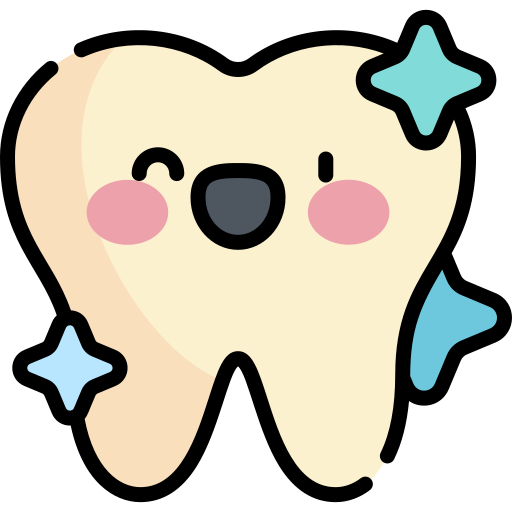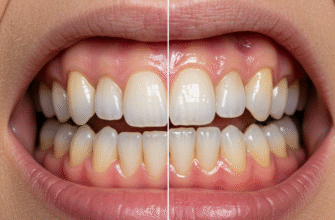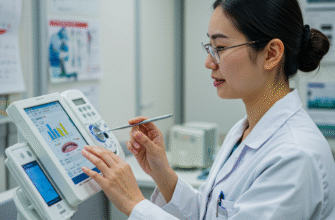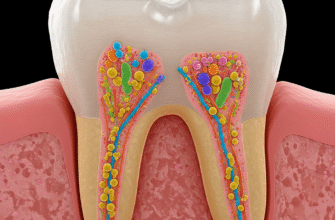Imagine a dental office that doesn’t sit still. Picture it rolling down a highway, navigating city streets, or pulling up right where it’s needed most. This isn’t a scene from a futuristic movie; it’s the reality of mobile dental clinics. These clinics on wheels, along with broader outreach programs, are transforming how communities access essential oral healthcare. They bridge gaps, overcome barriers, and bring smiles to faces that might otherwise go without.
The core idea is simple yet powerful: if people can’t get to the dentist, let’s bring the dentist to the people. This approach is particularly crucial for those living in remote areas, individuals with mobility issues, or communities facing economic hardship where a traditional dental visit might seem like an unattainable luxury.
Wheels of Change: The Origins
The concept of mobile healthcare isn’t brand new. Think of early doctors making house calls with their black bags. Mobile dentistry evolved from this spirit of bringing care directly to patients. While rudimentary forms existed earlier, the idea gained more traction in the mid-20th century, particularly for serving military personnel or reaching isolated communities. Early mobile units might have been basic, perhaps a converted bus or trailer with essential tools, but they laid the groundwork for today’s sophisticated operations.
These pioneers recognized that dental health is intrinsically linked to overall well-being, and that physical distance or lack of transportation shouldn’t be insurmountable obstacles to receiving care. Their vision was about accessibility and equity, principles that continue to drive mobile dental initiatives today.
The Clinic on the Move: How It Works
So, what does a modern mobile dental clinic look like? It’s a marvel of compact design and efficiency. These units are often housed in specially converted vehicles, ranging from large vans and RVs to custom-built trailers. Inside, you’ll find a surprisingly complete dental operatory.
Essential Features Often Include:
- A comfortable dental chair for patients.
- X-ray equipment, often digital for quick processing.
- Sterilization units to ensure instruments are clean and safe.
- Handpieces, suction, and lighting similar to a fixed clinic.
- Storage for supplies and instruments.
- Sometimes, a small waiting area or an intake station.
Powering these clinics can involve generators, external power hookups, or increasingly, sustainable energy sources like solar panels. Water supply and waste management are also carefully planned. The staff typically includes a dentist, one or more dental hygienists, and dental assistants. Volunteers often play a crucial role too, helping with administrative tasks, patient flow, or community liaison.
The range of services provided can be quite comprehensive, focusing heavily on prevention and basic restorative care. This might encompass:
- Dental screenings and examinations.
- Cleanings and fluoride treatments.
- Dental sealants to prevent cavities in children.
- Fillings for cavities.
- Simple extractions.
- Oral health education and hygiene instruction.
Connecting with Communities: The Target Audience
Mobile dental clinics and outreach programs are specifically designed to serve populations that face significant barriers to accessing traditional dental care. Their reach is broad and impactful.
Serving Rural and Remote Populations
For individuals living miles away from the nearest dental office, a mobile clinic can be a lifeline. Transportation challenges, time off work, and distance can make regular dental visits nearly impossible. Mobile units bring these essential services directly into these communities, often setting up at community centers, local schools, or other accessible locations.
Supporting Low-Income Urban Areas
In urban settings, cost and lack of insurance are major barriers. Mobile clinics often partner with community organizations or operate on a sliding scale fee, or provide free services through grants and donations, making care affordable for families and individuals who might otherwise forgo it. They reduce the indirect costs too, like transportation and lost wages from taking time off work to travel to a distant clinic.
Caring for Children in Schools
Bringing dental care to schools is a highly effective strategy. It minimizes disruption to a child’s education and makes it convenient for parents. School-based programs often focus on preventive care like screenings, cleanings, fluoride treatments, and sealants, setting children on a path to good oral health from a young age. It also provides an opportunity for early intervention if problems are detected.
Assisting the Elderly and Those in Care Facilities
Older adults, especially those in nursing homes or assisted living facilities, often face mobility challenges that make trips to an outside dentist difficult. Mobile dental services can provide on-site care, addressing their unique oral health needs, which can include issues like dry mouth, gum disease, and denture care. This convenience greatly improves their quality of life.
Reaching Out to Vulnerable Groups
Populations such as individuals experiencing homelessness, migrant workers, or those in temporary shelters often have acute dental needs but the least access to care. Mobile clinics and outreach teams make a concerted effort to connect with these groups, offering compassionate and essential services in a non-judgmental environment.
More Than Just a Visit: The Power of Outreach Programs
While mobile clinics are a visible and vital component, dental outreach encompasses a wider array of activities aimed at improving community oral health. These programs often work hand-in-hand with the mobile units or function as standalone initiatives.
Key Elements of Dental Outreach Include:
- Oral Health Education: This is fundamental. Outreach programs conduct workshops, distribute informational materials, and give presentations in schools, community centers, and health fairs. The goal is to empower individuals with knowledge about proper brushing and flossing techniques, healthy dietary choices, and the importance of regular dental check-ups.
- Screening Events: Sometimes, the first step is simply identifying needs. Outreach teams might organize large-scale screening events, perhaps at a community festival or health fair, to quickly assess oral health status and refer individuals for follow-up care, potentially to a partner mobile clinic or a local fixed-site provider.
- Partnerships and Collaboration: Effective outreach relies on strong community partnerships. This involves working with schools, local government agencies, non-profit organizations, faith-based groups, and other healthcare providers to reach target populations and coordinate efforts.
- Advocacy for Oral Health: Outreach programs can also play a role in advocating for policies that support better oral health access and funding for community dental initiatives.
- Preventive Supply Distribution: Simple things like toothbrushes, toothpaste, and floss can make a big difference. Outreach programs often distribute these essential supplies, especially to underserved children and families.
The philosophy behind comprehensive outreach is that good oral health is built not just through treatment, but through sustained education, prevention, and community support. It’s about creating a culture where oral health is valued and accessible to everyone.
The Far-Reaching Benefits
The impact of mobile dental clinics and outreach programs extends far beyond just treating toothaches. They generate a cascade of positive effects for individuals and communities.
- Dramatically Improved Access to Care: This is the most obvious benefit. By removing geographical and financial barriers, these programs bring essential dental services to people who would otherwise go without.
- Emphasis on Prevention and Early Detection: Many mobile clinics focus on preventive services like cleanings, fluoride, and sealants, as well as early detection of issues like cavities or gum disease. This approach can prevent more serious and costly problems down the line.
- Reduction in Dental Emergencies: Regular preventive care and early treatment can significantly reduce the number of painful and expensive dental emergencies that might otherwise lead to emergency room visits.
- Enhanced Overall Health: Oral health is closely linked to overall health. Poor oral health has been associated with conditions like heart disease and diabetes. By improving oral health, mobile clinics contribute to better general well-being.
- Cost-Effectiveness: While setting up a mobile clinic involves initial investment, it can be a cost-effective way to deliver care, especially when compared to the long-term costs of untreated dental disease or reliance on emergency rooms for dental pain. Preventing problems is almost always less expensive than treating them.
- Community Engagement and Trust: Mobile clinics often become a familiar and trusted presence in the communities they serve. This builds rapport and encourages individuals to seek care who might be hesitant to visit a traditional clinic.
- Educational Impact: Beyond direct treatment, the educational component of these programs empowers individuals to take better care of their own oral health and that of their families, leading to long-term positive changes in behavior.
- Flexibility and Adaptability: Mobile units can be deployed rapidly to areas with emerging needs, such as after a natural disaster when local infrastructure might be damaged.
Challenges on the Journey
Despite their immense value, operating mobile dental clinics and outreach programs is not without its hurdles. Organizers and staff often face a unique set of challenges.
Funding and Sustainability
Securing consistent funding is a primary concern. This includes the initial cost of the vehicle and equipment, as well as ongoing operational expenses like fuel, supplies, staff salaries, and maintenance. Many programs rely on a mix of grants, donations, government support, and sometimes patient fees (often on a sliding scale), making long-term financial stability a constant effort.
Logistical Complexities
The “mobile” aspect brings its own logistical puzzles. Finding suitable, safe, and accessible parking locations with necessary permissions can be tricky. Access to reliable power sources and water, as well as proper disposal of dental waste, needs careful planning for each site. Vehicle maintenance and repairs can also cause downtime.
Regulatory and Licensing Considerations
Mobile dental clinics must adhere to the same health, safety, and licensing regulations as brick-and-mortar clinics, which can sometimes be complex to navigate when operating across different jurisdictions or in non-traditional settings. Ensuring compliance requires meticulous attention to detail.
Patient Follow-Up and Continuity of Care
While mobile clinics excel at providing initial care and preventive services, ensuring continuity of care for patients who need more complex or ongoing treatment can be a challenge. Establishing effective referral networks with fixed-site dental offices willing to accept patients, especially those with limited financial means, is crucial.
Ensuring comprehensive follow-up for patients requiring advanced dental procedures beyond the scope of a mobile unit is a critical challenge. Establishing strong referral pathways to fixed clinics is essential for true continuity of care. Without these connections, patients identified with serious needs might not receive the complete treatment they require.
Staffing and Volunteer Management
Attracting and retaining qualified dental professionals willing to work in a mobile setting can sometimes be difficult. For programs relying heavily on volunteers, recruitment, training, and scheduling can also be demanding.
Community Awareness and Trust-Building
While many communities welcome mobile services, sometimes there’s a need to build awareness and trust, particularly if the concept is new to an area. Consistent outreach and positive experiences are key to overcoming any initial skepticism.
Stories from the Road: Making a Difference
Behind every mobile dental clinic and outreach program are countless stories of changed lives. It might be the child who can finally eat without pain after a long-neglected cavity is filled, or the senior citizen who receives their first professional dental cleaning in years, right at their nursing home. It’s the relief on a parent’s face when their child receives preventive sealants at school, a service they might not have been able to access otherwise.
These programs often reach individuals who have felt overlooked or have resigned themselves to living with dental discomfort. The dedication of the staff and volunteers who run these services brings not just clinical care but also compassion and a sense of being valued. The simple act of alleviating pain or restoring a smile can have a profound impact on an individual’s confidence and overall quality of life. These are not just dental procedures; they are acts of community support and care in action.
Paving the Future for Mobile Dental Care
The journey of mobile dental clinics and outreach programs is far from over; in fact, it’s evolving. The future looks promising, with several trends likely to shape their development.
Technological Advancements: We can expect to see even more sophisticated technology integrated into mobile units. This could include enhanced digital radiography, teledentistry capabilities for remote consultations and specialist advice, and more efficient data management systems. Portable equipment is becoming lighter and more powerful, further increasing the range of services that can be offered on the go.
Expansion of Services: While prevention and basic care will likely remain the core, there’s potential for mobile units to offer a broader spectrum of services, perhaps through specialized units or enhanced partnerships. This could include more complex restorative work or even certain orthodontic or prosthodontic consultations.
Greater Collaboration and Integration: The future will likely see stronger collaborations between mobile dental programs and other health and social service providers. Integrating oral health into overall health initiatives, for example, by co-locating mobile dental services with general medical check-ups or vaccination drives, can create a more holistic approach to community wellness.
Focus on Data and Outcomes: There will be an increasing emphasis on collecting data to demonstrate the impact and cost-effectiveness of mobile dental programs. This information is vital for securing funding, improving services, and advocating for supportive policies.
Sustainability Initiatives: Expect more focus on environmentally friendly operations, such as solar-powered clinics and waste reduction strategies, making these vital services more sustainable in the long run.
A Lasting Impression
Mobile dental clinics and outreach programs are more than just a convenient alternative; they are a testament to innovation, dedication, and the fundamental belief that everyone deserves access to oral healthcare. They navigate challenges, adapt to diverse needs, and consistently deliver care where it’s most impactful. By breaking down barriers of distance, cost, and awareness, these initiatives are not just filling cavities; they are filling a crucial gap in the healthcare landscape, one community, one school, and one smile at a time. Their story is one of resilience and a commitment to bringing health and hope directly to the people.









